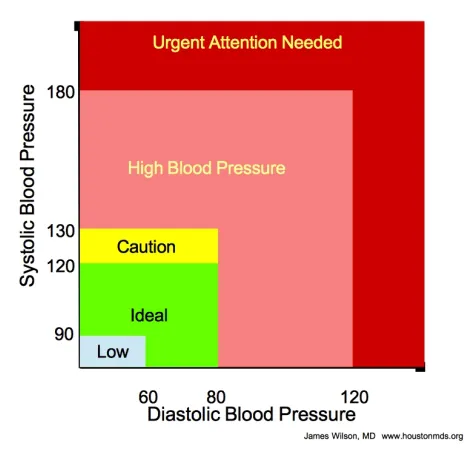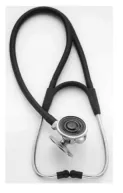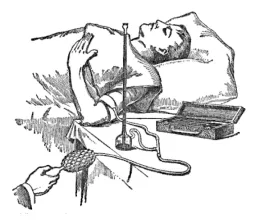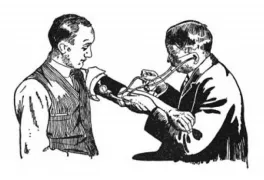Blood Pressure
What the numbers mean, how to know if you’re normal and what to do if you’re not

What is High?

When looking for guidance on the normal values for blood pressure, confusion reigns. Elephants lumber with a blood pressure of 190/120. The head sitting high above a giraffe heart asks a blood pressure of 235/160 to be fed properly. A frog rests quietly with a blood pressure of 40/20, while the rat and the rabbit hover near 120/80. Nature maintains blood pressure in a narrow range to ensure proper blood flow to the brain, the heart and everything else. Which narrow range depends upon the animal and the environment that shaped it. Ironically, the ideal range for us (see cover) was suggested when routine blood pressure measurement was first introduced. However, proving that the suggestion was a good one took quite some time and an enormous amount of effort.
By the way, these numbers aren’t lb/in2 like your car tires. The values are in millimeters of mercury.
In the beginning…
No one knows when high blood pressure first appeared. However, its complications have been around as long as written history.
At a time when people were living from meal to meal instead of paycheck to paycheck, blood pressure was unlikely to have been a major health problem. More pressing concerns were fevers, starvation, and tigers. Later, as accumulated learning and civilization brought longer lives and regular meals, the complications of high blood pressure began to register among physicians. Blood pressure may deviate from its natural settings for a number of reasons: heredity, hormones and kidney function. However, in most of us, it begins with salt intake, excess body weight and too little exercise. As diets began to change, with the liberal use of salt as a food preservative, blood pressure probably grew in importance. It grew silently because blood pressure cannot be felt or seen. It is not disfiguring. Its presence is known only when measured. Until about 200 years ago, no one measured. Widespread measurement of blood pressure truly began at the dawn of the 20th Century.
The complications
High blood pressure urges heart muscle to thicken, just as the muscle in the arm does when it is forced to lift weight repeatedly. Artery walls also grow thicker. These adaptations are provisions of nature to overcome challenges normally imposed by physical activity. Under the constant influence of abnormal blood pressure, adaptations become entrenched and cause disease. Thick heart muscle becomes stiff and inefficient. The thickened arteries lose their rubbery quality and offer resistance to blood movement. Abnormal arteries disrupt blood supply to parts of the kidney and brain.
Heart muscle and artery walls get thicker and stiffer. Everything happens in silence.
The laboring heart and failing kidney produce fatigue, difficulty breathing and fluid retention, historically referred to as “dropsy”. Meanwhile, arteries that fail to thicken under the load may stretch, enlarge and rupture. Rupture of an artery in the brain produces an illness known in the past as “apoplexy”. Today, we know these problems as heart failure, kidney failure, and stroke.
Mercury and measuring pressure
Before there were gauges and computers, the idea of pressure was referred to by the weight of a fluid or how high it stood in a container. Water is the ubiquitous liquid, but for experiments with different pressures, very tall containers of water were necessary.
A pressure of 2 lb/in2 is 100 mmHg
Elemental mercury is normally a fluid. It is also very heavy (14X water). Therefore, a tube filled to some specific level of mercury represents the same weight or pressure as a much larger tube filled with water. This made measurements much more convenient. Modern gauges can relate pressure in different ways. Your tire gauge is in PSI (lb/in2 ). However, the height of a column of mercury is still used to describe blood pressure.
Blood Pressure
Blood pressure is most easily measured by recording how hard we have to press on an artery to force it shut. The current technique uses a cloth belt, into which an inflatable bladder is sewn. 7 The belt is wrapped around a limb, with the bladder positioned over an artery. With the belt held tightly, the bladder is inflated to the point at which the pulse disappears. To measure pressure, the bladder is attached to a column of mercury in glass tubing. The rise of mercury is the pressure being applied to the artery.

Systolic and Diastolic measurements
When the heart beats (systole), pressure in the artery briefly rises. When the heart rests (diastole), pressure falls to its lowest value. Using a stethoscope held just beyond the belt and over the part of the limb where the artery runs, the sound of each heartbeat can be heard from the artery during deflation of the bladder.
As the pressure in the bladder is reduced, a sound first appears when systolic blood pressure overcomes the compression from the bladder. The sound disappears when the compression from the bladder falls below the least (diastolic) pressure in the artery.

Standards
- Blood pressure is typically measured in the upper arm, in the seated position.
- Measurement should follow a 5-10 minute period of rest.
- The bladder used in the belt (colloquially known as a cuff) should be at least 5 ½ inches wide and cover ½ the circumference of the arm.
Although not presently a standard, a two-week average of recordings taken at home, with an automated device, may be a more accurate reflection of blood pressure than those taken in the office setting.
Chasing Normal
After blood pressure measurement became commonplace, the values in young, healthy adults were used to get an idea of normal values. However, a child’s blood pressure is quite low, 80-90 mmHg and the young adult’s slightly higher at about 100- 110. Older, healthy people had pressures that were even higher still. Therefore, many people felt that “normal” had a wide range and that blood pressure probably increases, as we grow older.
The first population studies of blood pressure came from insurance companies in the early 1900’s!
Statistics. Life insurance companies quickly realized the value of blood pressure measurement as a tool to uncover hidden risk. Two companies applied some recently developed mathematical techniques to provide the first scientifically derived estimate of normal blood pressure. To do so, they examined the blood pressure of in large numbers of normal people. They also compared pressure at enrollment to later health status. The results suggested normal to be a systolic value in the 120’s and not more than 140. A blood pressure over 150 warned that the individual who appeared normal today, might not stay that way for very long.
Blood pressure has since been examined exhaustively from the perspective of age, body habitus, diet, habits and heritage. In addition, illnesses that develop over time have been correlated to the first blood pressure, its change over time, and with the context of additional problems like diabetes mellitus or smoking.
Normal Blood Pressure is <120/80 mmHg
Any person whose blood pressure is consistently above 120/80 faces a chance of illness in the future that is higher than another, otherwise identical, person whose blood pressure remains lower. The relationship is seen most easily with stroke. However, high blood pressure also affects the development of heart failure, kidney disease and heart attack.
Treatment
Lifestyle
Moderate calorie restriction, monitored sodium and minimal alcohol intake, along with regular exercise are called a “healthy lifestyle”.
LESS BODY FAT MORE MUSCLE <2000 MG SODIUM/DAY
Anyone concerned about the eventual development of cardiovascular disease can follow the recommendations of healthy lifestyle without risk of harm and with full expectation of benefit. The potential gain makes the recommendation all the more urgent when blood pressure is consistently above normal, 120/80 mmHg
MEDICINE
The menu of medicines that lower blood pressure is extensive, allowing attempts to steer blood pressure to a desired range, with the least chance of unwanted effects
Medicines alter blood pressure by:
- Relaxing tiny arteries
- Manipulating or blocking hormone effects
- Blunting the communication of nerves that influence blood pressure.
- Encouraging the kidney to release sodium.
Excess blood pressure lowering may produce fatigue, lightheadedness, confusion or poor balance
The potential for medicines to cause unintended side effects required that the relationship of blood pressure and its complications be revisited during medical care in order to define when the illness was more dangerous than the intended treatment. A threshold of 140/90 is the point at which medical treatment of blood pressure is consistently valuable.
Meanwhile, diabetes, high cholesterol, and smoking contribute to the same diseases caused by high blood pressure. People who have an illness or behavior posing a threat to their health, in addition to abnormal blood pressure, gain from medical treatment beginning at values in excess of 130/80.
Treat blood pressure above 130/80 if you have diabetes
Which Medicine?
Some medications can address more than one illness at the same time. Thus, the presence of any of these additional illnesses often drives the choice of medicine. Absent that, whatever medicine works best, with the least side effects is a good choice.
What is the goal blood pressure?
If you are not taking medicine, but paying attention to your blood pressure and lifestyle, the goal is an average blood pressure <120/80.
Medicine?
Since medicine can occasionally overcorrect, the goals of blood pressure during treatment are different than those with diet/lifestyle. Generally, the goal is to reduce the blood pressure to below the threshold value that prompted treatment. If you started because of a blood pressure above 130/80 in the presence of another illness, then that is the goal. It probably should be the same for everyone, but without additional illnesses, <140/90 is acceptable.
<140/90 is OK <130/80 is GOOD
But I can’t tolerate that blood pressure!
In older people and those with high blood pressure for a long time, blood pressure may need to be lowered slowly to avoid side effects. Therefore, goals are individualized with the help of a physician. Some societies recommend an initial goal of <160/90 for older people, with longstanding high blood pressure, who are beginning treatment.
Conclusion
Ideal blood pressure is shown on the COVER as the GREEN ZONE. A consistent diastolic blood pressure over 80 warrants a discussion with your physician and consideration for treatment. For systolic values,
- 120-130 is acceptable, but should make you take notice and attend to diet and exercise.
- 130-140 is high blood pressure. The decision to take medicine requires consideration of additional health risks.
- 140, treatment is almost certainly necessary. While taking a medicine to control blood pressure, <130/80 is the acceptable, or treated normal value. To assist your physician, obtain an automated device that you can use at home. Take values after 5-10 min of rest, at scheduled times once or twice daily and record them. The 2-week average is an important number.
The caveat to all of these recommendations is that
- The first focus of attention to blood pressure is lifestyle: diet, exercise, weight management and minimal alcohol intake.
- Recommendations are not rules, but points for discussion with your physician.



